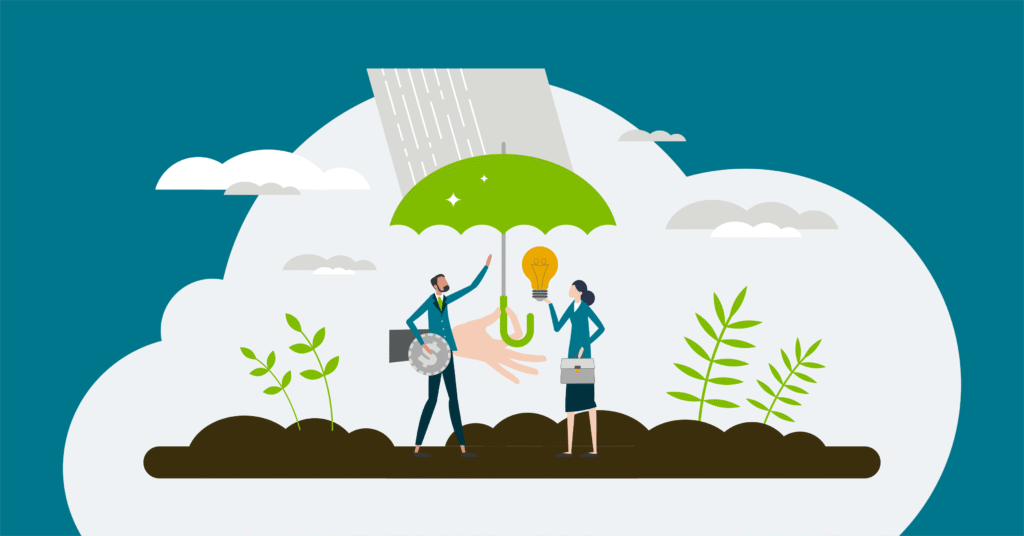Companies: it’s not a matter of if a crisis will impact your employees, but when. However, the number one reason we hear from prospective clients who do not move forward with an Employee Assistance Fund (EAF) is that their leadership is concerned about the sustainability and long-term funding commitment to a program like this. In today’s operating environment, we get it! It is hard to think long-term. But what does this do? It puts companies in an even riskier position of not being prepared when a disaster hits. That’s where our expertise comes in — we help organizations build sustainable EAFs by designing a funding strategy for your EAF alongside your overall program.
With an EAF, companies can be prepared to provide financial support for employees navigating a variety of challenging situations, from natural disasters to personal hardships, impacting their well-being and ability to work. Offering an EAF is a strategic way to strengthen employee loyalty, foster a supportive workplace culture, and minimize disruptions to productivity by ensuring staff feel cared for during life’s most difficult moments.
Employee Assistance Funds (EAFs) can draw from multiple funding sources. While the largest is typically corporate contributions, other common sources include employee donations, matching gifts, special fundraisers, and more. Here, we explore three unique strategies our clients are using to increase their EAF fundraising to ensure the longevity of their programs.
Small contributions, big impact: A point of sale approach to funding employee assistance
One of our hospitality clients uses a strategy unique to their business when offering discounts to employees — a small booking fee that gets credited to their Employee Assistance Fund program. In this model, our client has created a built-in funding stream for its EAF by charging employees a small $1 per room, per night fee when they book discounted rooms. The fee is modest enough that employees can still access valuable travel savings, but collectively, these contributions generate a steady pool of resources to support colleagues in times of crisis. This approach not only makes the EAF financially sustainable but also builds a sense of shared investment — employees know their everyday benefits help fund a program that could one day support them or a coworker in need.
Continuous employee giving: A workplace campaign approach to disaster relief
One of the most effective ways to sustain an Employee Assistance Fund is through recurring employee donations made via workplace giving platforms or a custom donation page made by our Global Impact team. This option allows staff to contribute directly to the fund through payroll deductions, credit card donations, and one-time gifts, making participation simple and accessible. Similar to the first example, small contributions add up to a larger fund that can be used to help colleagues facing unexpected hardships.
Earlier this year, we spotlighted HP in our Driving Employee Engagement whitepaper, sharing how HP enables employees to donate to their Employee Relief Fund and support colleagues experiencing hardship, with the company matching employee donations. This program is featured in internal communications, particularly during their annual Relief Month campaign. This serves as an outstanding model for companies seeking to enhance employee engagement and foster a culture of compassion and care for their colleagues. The matching component demonstrates HP’s corporate commitment while amplifying employee contributions; the online giving option provides a user-friendly, transparent giving experience; and the integration with broader corporate social responsibility initiatives creates a cohesive narrative around community support.
Shared compassion, stronger communities: A multi-stakeholder approach to giving
In our last example, one innovative way companies are strengthening their Employee Assistance Funds is by engaging their customers. A Global Impact client started engaging customers by launching a dedicated fundraising page, inviting customers to contribute when the Maui wildfires devastated their employees’ community. The response was overwhelming — customers rallied behind the effort, donating generously to provide immediate support for affected staff and identified nonprofit organizations. This approach not only brought in significant resources for employees in need and the Maui community but also deepened customer loyalty by giving them a meaningful way to stand alongside the company’s workforce during a difficult time.
Global Impact continues to support this client by engaging their customers, alongside their employees, when a disaster impacts other properties. Involving your customer base in your EAF fundraising is a great way to bolster your brand by showcasing an authentic commitment to your values, which builds trust and goodwill with both employees and the public.
Why Global Impact?
Disasters are unpredictable — but your response doesn’t have to be. Global Impact has nearly 70 years of experience distributing funds to those in need across the globe. We seamlessly process assistance funding, offering non-taxable income to employees and tax-deductible contributions to the program. And we quickly launch fundraising or matching gift efforts, empowering employees to support colleagues in crisis or the nonprofits leading on-the-ground relief.
Whether you’re ready to launch a new EAF, strengthen an existing program, or consider grants to nonprofits working on disaster response, we’re here to help every step of the way.
Looking for more information?
- Reach out to [email protected] to launch an EAF for your employees. We’d be thrilled to work with you!
- Listen to our Managing Director, Brittany Craig, talk about the importance of EAFs in a recent podcast.
- Consider joining our newsletter for more updates on our overall work at Global Impact. Or click here to learn more about our EAF work.


